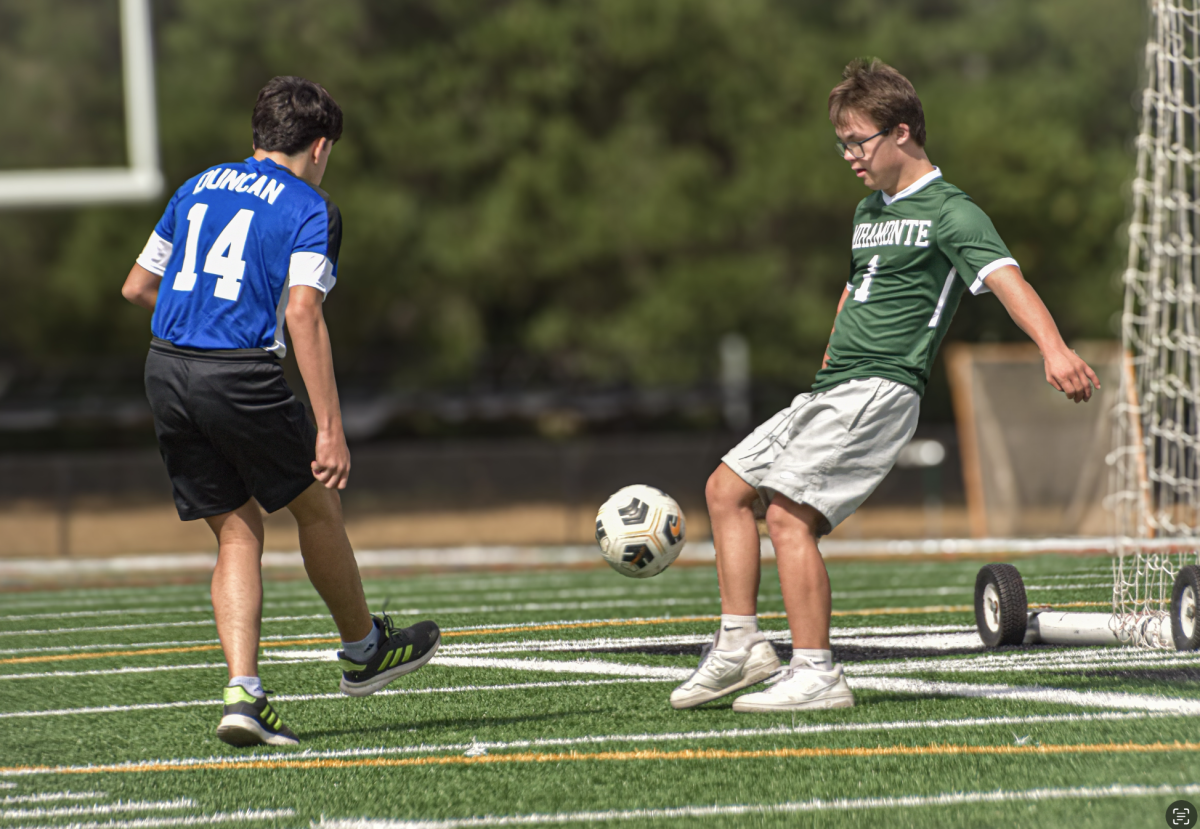For the AP Physics 1 second-semester final, teacher Riki Sorenson challenged students to synthesize their year’s worth of material into one hands-on project with the potential to earn extra credit. After weeks of research, over a dozen teams began construction and built their own trebuchet, also known as a catapult. The goal was to launch a tennis ball forward a minimum of 15 feet. Whether they relied on YouTube tutorials, created detailed sketches, or came up with original ideas, each team was required to apply their knowledge to the test.
Once the building process was complete, fourth and fifth-period physics classes put their trebuchets to the test; while most students met the 15-foot requirement, some even far exceeded it. “The farthest out of both periods was shot into the traffic circle [from the edge of the Quad closest to the gym],” junior James Giquinto, 4th-period physics student, said. The fourth period victors were Bo Iverson and Owen Beidelman, while the period five winners were William Guzman and Collin Finegan. They won the satisfaction of all their hard work paying off, in addition to extra credit towards their grade.
However, the challenge wasn’t done yet; afterwards, students wrote an analysis explaining how they applied their physics knowledge to the project. “It forced us to talk about why we made the choices we did and describe the connection to what we learned,” Giquinto said. Throughout the year, students gained valuable knowledge that was critical to achieving a successful result. The project consisted of several main topics they had previously learned in class, including torque, rotational motion, kinematics, and dynamics, all of which were expected to be described in the follow-up analysis. The project not only tested their problem-solving and teamwork skills, but also gave students the chance to see physics in motion.









